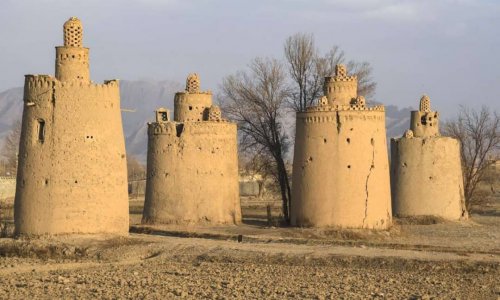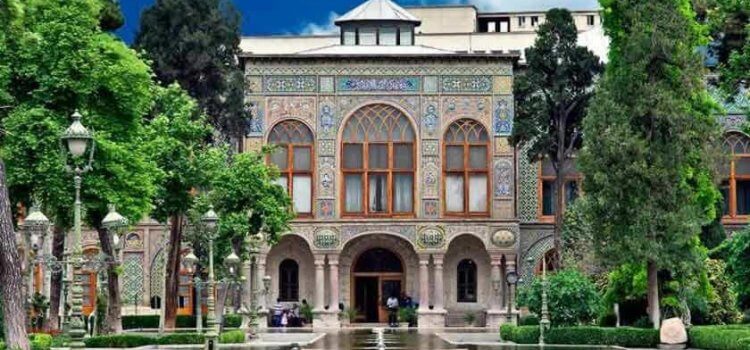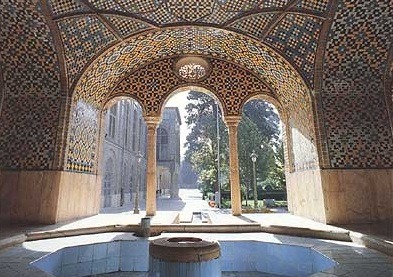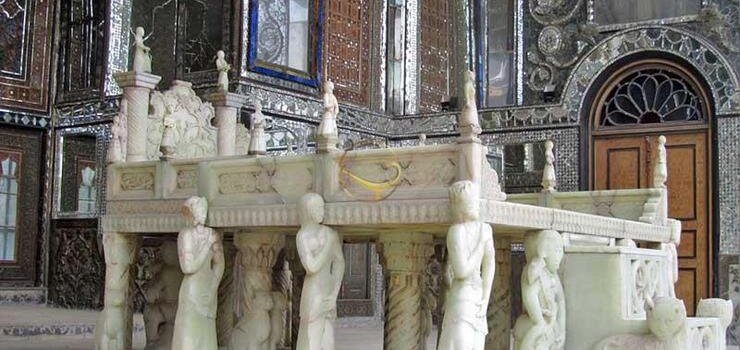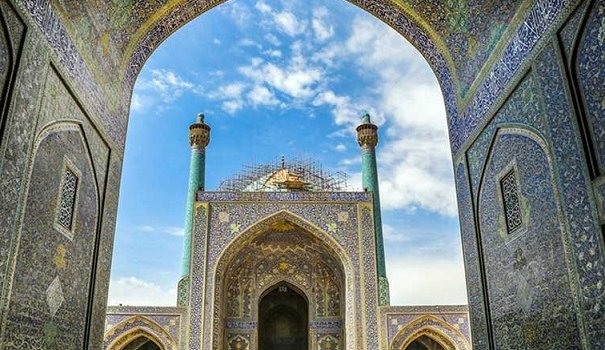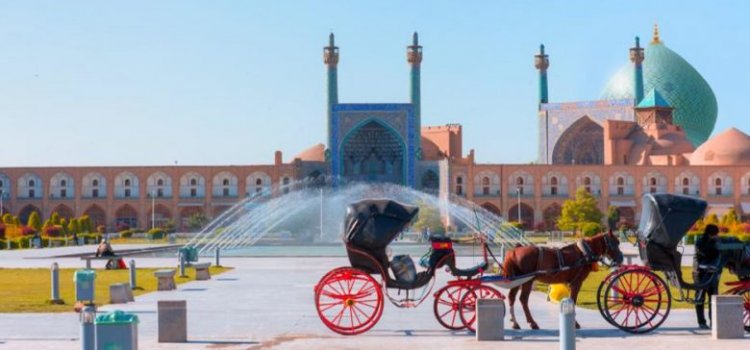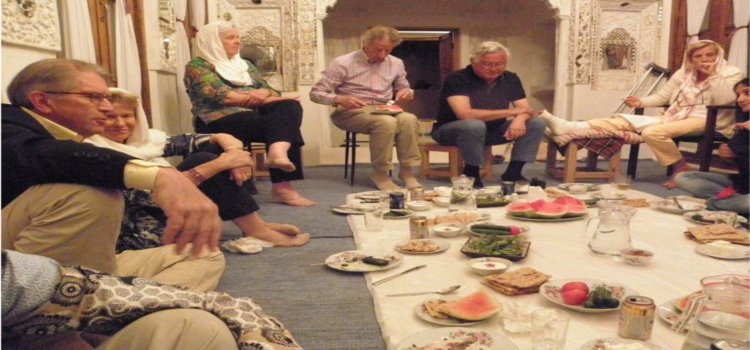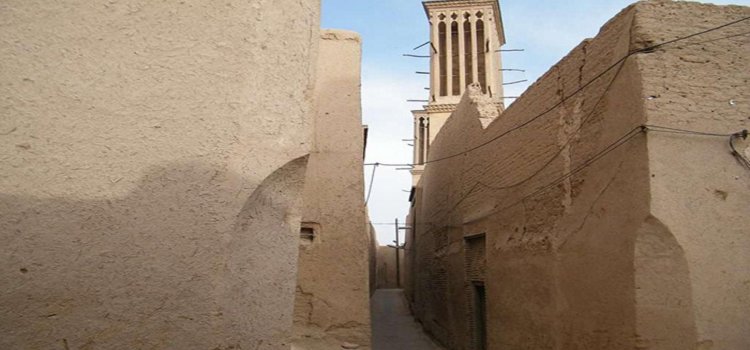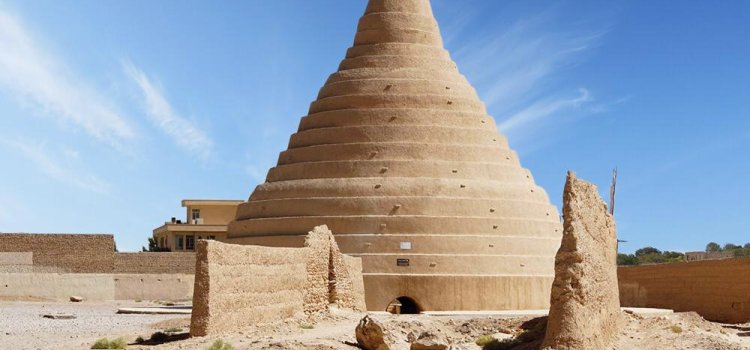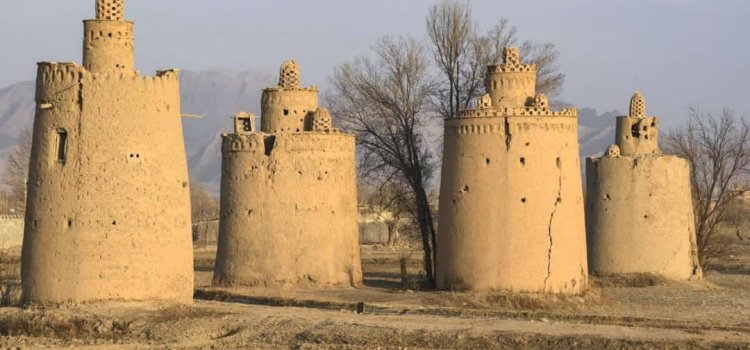Golestan Palace
Golestan Palace, or the Palace of Flowers, houses some of the capital’s oldest royal buildings and is one of the most prominent historic complexes in Iran.
Golestan Palace, or the Palace of Flowers, houses some of the capital’s oldest royal buildings and is one of the most prominent historic complexes in Iran. During the Qajar rule, this now UNESCO World Heritage site was considered as the political capital of the Qajar dynasty. It witnessed coronations of seven Qajar rulers as well as both of the Pahlavi kings.
As most of the buildings within the site date to the Qajar era, it is generally perceived as a Qajar palace complex. The true history of its origins, however, stretches far back to the Safavid period when, in 1580, Shāh Abbās I built a citadel in Tehran. Later on, between 1760 and 1767, Karim Khan Zand built a divān-khāneh (court or seat of the government) within the Safavid citadel and changed the main design of the complex. At present, only the Marble Throne Veranda and Karim Khāni Nook date to this period.
After Karim Khan’s death, Agha Mohammad Khan, the founder of the Qajar dynasty, took advantage of the ensuing civil unrest in Iran and expanded Qajar territory up to the cities of Tehran and Damghan. In 1795, he defeated the last king of the Zand Dynasty, Lotf Ali Khan, conquered Tehran the following year and declared himself the King of Iran. Aghā Mohammad Khan’s coronation at the Golestan Palace turned it into a place of unrivalled importance among the Qajar kings. Fat’h Ali Shah (1772-1834), who was also crowned here, commissioned further decoration and expansion of the palace complex.
Nāser al-Din Shah, impressed by the palaces he had visited in Europe, had the Palace extensively renovated, having it almost entirely reshaped. The complex did not undergo almost any changes until the fall of the Qajar dynasty in 1925.
Golestan Palace has subsequently witnessed coronations of the Pahlavi kings. During the reign of Reza Shah Pahlavi, all the surrounding buildings known as andaruni or haramsara (domestic spaces that are reserved for the women of the palace and are inaccessible to adult males except for close relations) were completely demolished. These andaruni spaces, known as Farah-ābād during the reign of Fat’h Ali Shah, consisted of several interconnected, exquisite yards surrounded by rooms of various sizes intended for female dwellers of the royal harem who would spend their allocated time with the monarch here. There have always been numerous stories surrounding the haramsara, as told by the favorite wives of the kings, or stories about the famous clown Aziz al-Soltan or the coquetries of Babri Khan, the royal cat whose sudden disappearance made the residents of haramsara melancholic.
Karim Khani Nook
Next to the Marble Throne Veranda, there is the second Zand monument, the Karim Khani Nook or Karim Khani Veranda which was Naser al-Din Shah’s favorite place of retreat, where he spent long hours in solitude.
Next to the Marble Throne Veranda, there is the second Zand monument, the Karim Khani Nook or Karim Khani Veranda which was Naser al-Din Shah’s favorite place of retreat, where he spent long hours in solitude. When looking at its earlier photos, the veranda has, alas, lost some of its original features. The stairway leading to the Karim Khani Nook has a tragic story of its own. Out of long-nurtured hate for Karim Khan, Agha Mohammad Khan had the Zand monarch’s body disinterred and reburied under the stairway. Later in 1925, Reza Shah Pahlavi ordered for Karim Khan’s bones to be reburied next to the Safavid King, Shah Soltan Hosein, in Qom. Some historians insist, however, that the remains were brought back to the Karim Khan Zand’S original grave in Shiraz.
One of the most interesting objects in the Karim Khani Nook is the tombstone of Naser al-Din Shah, assassinated in 1896. Brought here from the Shah Abdol Azim Shrine, it is a single piece of marble stone, bearing a life-like relief of the king carved by Abbas Gholi. More interesting, however, is the story, or rather stories, about the king’s assassination.
One common version among various divergent versions is that on April 29, 1896 Naser al-Din Shih attended the Shah Abdol Azim Shrine in Rey for prayer. Unlike other occasions, however, he ordered for the shrine to be kept open to the public. A man known as Mir-za Reza Kermani, taking advantage of this situation and bearing a petition in his hand, approached the king to ask for his favor. Once at the right distance, he pulled out a handgun and shot the king in the heart. In an attempt to save Naser al-Din Shah, a chair was brought from the private tomb of Badr family, which he was seated on. Faded traces of the king’s blood are still visible on the chair, placed in a corner of the main hall of the palace for the visitors to have a look at.
The rumor has it that in order to avoid any social unrest following the king’s death, it was decided to keep Naser al-Din Shah’s murder secret. The dead body of the king was, thus, placed into the royal coach (now kept in the National Car Museum of Iran) and sent to the Golestan Palace. However, in addition to the corpse of Shah-e Shahid (the Martyr King), there was another man in the couch who impersonated Naser al-Din Shah. Wearing white gloves, he would at times wave at people or touch his moustache in the same way as the dead king used to do. Once in the Golestan Palace, the body of the dead king was buried for a period of one year in the Royal Tekiyeh and later moved to the Abdol Azim Shrine.
Marble Throne Veranda
In 1792, when Aghā Mohammad Khan conquered Shiraz, he had the paintings, curtains, mirrors, and marble slabs from Karim Khan’s citadel in Shiraz transferred to Tehran
In 1792, when Aghā Mohammad Khan conquered Shiraz, he had the paintings, curtains, mirrors, and marble slabs from Karim Khan’s citadel in Shiraz transferred to Tehran, which at that time already had a Zand divan-khāneh, and installed in the Marble Throne Veranda, built in 1807. The veranda contains elements from both Zand and Qajar periods.
In 1807, Fat’h Ali Shah ordered construction of a marble throne, which came to be known as Takht.e Tavous (the Peacock Throne), consisting in total of 65 pieces of marble brought from mines in Yazd, to be placed permanently in the veranda. Designed by Mirza Baba Shirazi (Naqqāsh Bāshi) and the stonecutter, Mohammad Ebrahim Esfahani, this 250-year-old throne was completed in four years, from 1747 to 1751. The jewel-studded throne is carried on the shoulders of angels and demons, referring to the story of Solomon’s flying throne. This is why the Peacock Throne is also called the Throne of Solomon. Seventeen verses on its upper side praise Fat’h Ali Shah and the throne itself.
The Marble Throne Veranda was used on ceremonial occasions and for royal receptions. During religious celebrations and other festivals, the king would sit on the throne while statesmen, royal courtiers, ambassadors and foreign envoys would pay him homage. In 1925, Reza Shah Pahlavi held a symbolic coronation in the Marble Throne Veranda before his official crowning.
Jameh Abbasi Mosque (Imam Mosque)
On the Southern wing of the magnificent Naghsh-e Jahan Square, there stands a grand mosque, a UNESCO World Heritage Site, which represents one of the greatest achievements of the Safavid period in terms of architecture, decorative arts and the social and religious role it played in its heyday. This unique marvel is nothing but Jame Abbasi Mosque, also known as Shah Mosque and Soltani (Royal) Mosque. After the Islamic Revolution of Iran (1978-79), following the new political sensibilities of the time, it was renamed Imam Mosque.
Shah Abbas Orders the Construction of Jame Abbasi Mosque
Eskandar Beik Turkaman, the great historian of Shah Abbas’ court, tells the story of the construction of Jame Abbasi Mosque as follows: At the beginning of this blessed year (that is, 1611) the astrologists determined the fortunate hour to construct a grand mosque which would be the pride of heaven and earth. And so, the king ordered the construction of the first congregational mosque built under Safavid royal patronage. Even as a sign of God’s approval, several marble mines were discovered nearby, hidden in the depth of earth where no human would have suspected their existence.
Therefore, the construction of Shah Mosque began on the Southern side of Naghsh-e Jahan Square. Actually, the positioning of the mosque was a very clever move. Being located just across Qeysaria Bazaar, it attracted large groups of people who were after their daily business in the bazaar. In addition, passing Ali-Qapu Palace and the theological school and mosque of Sheikh Lotfollah Mosque assured people od Safavid protection and patronage. The construction of the mosque which began in 1611 ended in 1629.
However, there are inscriptions in the mosque which indicate several parts or decorations were added to the mosque during the reign of Shah Safi (1629-1642), Shah Abbas II (1632-1666) and Shah Soleyman (1648-1694).
What to See in Jameh Abbasi Mosque (Imam Mosque)
The massive Jameh Abbasi Mosque, covering an area about 19.000 square meters, is an architectural wonder with many details that would bewilder its visitors. In the rest of this article, we would introduce all the necessary details you need to know to fully appreciate the beauties of Jame Abbasi Mosque.
The Splendid Architecture of Jame Abbasi Mosque
The Portal
When you reach Jame Abbasi Mosque, before getting to the portal, you have to pass through a semi-circle pish-khan or forecourt. Flanking the eastern and western sides of the forecourt, there are two corridors containing shops and connected to Qeysarie Bazaar. In the middle of the pish-khan, there is a stone pond which used to be filled with water for the purpose of ablution. The walls surrounding the forecourt are decorated with false-arches, inscriptions, and haft-rangi (seven-color) tiles.
The portal itself is composed of different parts. It includes two goldasta minarets, each one rising as high as 42m. The minarets include decorations of spiral blue turquoise tiles and Bannai inscriptions. At the top of each minaret, there is a goldasta, a special space from which mo’azen calls people to prayer. However, since these goldastas overlooked the royal harem, they were never used during the Safavid period.
The main part of the portal is 27m high, embellished with haft-rangi tiles and faience mosaic. Around the portal, there is a large inscription representing a line from the Quran which reads as: “Do not stand in it ever! A mosque founded on God-wariness from the [very] first day is worthier that you stand in it [for prayer]. Therein are men who love to keep pure, and Allah loves those who keep pure.”
The niche composing the middle part of the portal is decorated with amazing honey-comb stalactites, giving the portal a stunning view. Below the stalactites, in the middle elevation and left and right sides, there are designs of three pairs of peacocks, representing god’s perfection as well as integrity and beauty.
Below this niche, in the middle of the portal, there are several important inscriptions. The largest one, running from East to West, states that Shah Abbas I built Jame Abbasi Mosque from the royal treasure (khāleseh) and dedicated it to the soul of his grandfather, Shah Tahmāsb. At the end of this inscription, you can find the name of the calligrapher, Ali-Reza abbasi, the chief librarian and the master calligrapher of Shah Abbas’ time, and also the date of the completion of the portal, 1616 AC.
Just under the inscription mentioned above, there is another smaller inscription written by Mohammad-Reza Imāmi which credits Moheb-Ali Beig Lala with supervision over the construction of the mosque. This same dignitary had joined the Shah by contributing to the endowments of the mosque from his own personal funds. The names of two architects are also associated with mosque: 1. Maestro Ali-Akbar Isfahani as the engineer of the mosque and, 2. Maestro Badi’-al-Zaman Tuni Yazdi, responsible for procuring the land and construction resources.
At the base of the portal, there exists two high-relief marble vases from which rises spiral turquoise tiles. The spiral tiles, on the one hand, symbolize Tuba tree of paradise, and on the other hand, draw the viewer’s eyes upward toward the apex and infinity.
The original doors of the portal (4 m by 1.7 m each) were of plane trees, covered with a thin layer of gold and silver and decorated with carvings and filigrees. Several lines of poetry are engraved around the door, the last one of them functioning as a chronogram. Based on this line, the gates were installed during the reign of Shah Safi (1629-1642).
A Great Engineering Dilemma Solved
Just like Sheikh Lotfollah Mosque, the façade of Jame Abbasi Mosque had to remain flush with the southern side of Naghsh-e Jahan Square, while at the same time orienting its mihrab(s) (prayer niches) correctly toward Qilba or Mecca. And this created a quite difficult challenge for the visual effect of skewed internal axis, which would be magnified in the royal mosque. However, as Sunan Babaie argues: “the architects and patrons of the mosque exploited this very potential for theatrical visual impact by creating a crescendo of forms heaped from one side to the other; viewed from a distance in the Meydān, as would have been the case for most denizens busy in the public square, the eye of the beholder is lead from the open-armed portal composition with its massive pištāq and soaring goldasta minarets to increasingly volumetric and loftier units culminating with the pišṭāq-dome-minarets of the qebla wall. To the worshipper entering the mosque, the transition from the gorgeously tiled and moqarnas-covered ayvān on the Meydān side to the courtyard is mediated through a twisted passageway-cum-ayvān that serves also as the northern ayvān of the courtyard.”
And she continues: “This entrance complex corrects the alignment of the mosque by twisting the axis of approach, but it also provides a liminal space passage through which provides the worshipper the opportunity, visually and spatially mediated, to leave the mundane world behind before entering the sanctified space of the mosque.”
Upon Entering Jame Abbasi Mosque
As the visitor passes through the gate and enters the mosque, he or she finds him/herself in the vestibule of the mosque, with a roof covered with amazing moqarnas (stalactite) decorations. The vestibule is flanked by two corridors, covered with haft-rangi tiles whose densely floral and vegetal decorations are reminiscent of the mythic Persian gardens and the Paradise.
If you take the left corridor, before reaching the main courtyard, you will notice a small door on your left. Passing through this door, you will find yourself in a semi-dark space which is called Gāv-Chāh. In this part of the mosque, there is a quite large pond and above it, on a stone platform, there is water well. Since they used to draw water from these wells by cows, it is called Gav (cow) Chāh (well). The water drawn from the well filled the pond and was used for making ablutions or other sanitary purposes.
The Main Courtyard
Leaving the corridor, you will find yourself in the main courtyard of the mosque. Following the traditional plan of Iranian mosques, known as Chahar-iwany, the main courtyard is surrounded by four iwans or porches. Traditionally, each of these four porches were used in a specific season, providing prayers with suitably warm or cold praying rooms.
In the middle of the courtyard, there exists also a large stone pond which provided prayers with a further source of water for ablution.
By the way, the most important iwan or porch of the mosque is its southern one. Why? Well, the southern porch of the mosque is the one which is oriented toward Mecca, and therefore should be the most decorated and glorious one of the porches. And don’t forget that it is the general pattern in all the Iranian mosques because of the location of Qibla or Mecca.
The Glorious Iwan (porch) of Jame Abbasi Mosque
Well, the southern iwan of Jame Abbasi Mosque is flanked by a pair of minarets, each one soaring as high as 48 m. Through this porch, one can enter the main dome chamber of the mosque.
The main dome chamber is connected to two hypostyles, with amazingly decorated high-rise vaults supported by stone columns. Actually, the columns are made of blocks of stone joined together by molten-lead. This engineering trick increased the flexibility of the mosques and thus the mosques resistance against probable earthquakes.
The Amazing Dome Chamber of Jame Abbasi Mosque
The most significant part of the southern iwan; that is, its dome chamber, is 22.5 m in diameter hemmed by walls as thick as 4.5 m. These thick walls lay the foundation for the turquoise high-rise double-layered dome of the mosque, the one you can also see from outside of the mosque.
The 52m heart-shaped external dome is built over an internal 38m hyperbolical dome, with a 13 m gap between them.
One of the most interesting points about this dome is the way it reflects the sound. Stand under the dome (specially at its center marked by a black stone) and make a sound. You would be surprised how unbelievably it echoes.
The beauty of the mihrab (prayer niche) is enhanced by a marble pulpit with 12 stairs a few meters to its right.
The Theological Schools of Jameh Abbasi Mosque
On the east and west of Jameh Abbasi Mosque, there are two theological schools called Naserieh and soleymanieh. These schools were built during the Safavid period, but an inscription in Naserieh schools indicates that it was rebuilt during the Naser al-Din Shah Qajar and so its name.
In the Suleymanieh School, there is a sundial, indicating the exact time of noon all throughout the year. This unassuming engineering wonder, which looks like a simple step, was built by Sheikh Baha al-Din Mohammad Ameli, known as Sheikh Bahai, the Safavid polymath who was involved in the design of the whole monument.
Naghsh-e Jahan Square
Naghsh-e Jahan Square, also known as Shah Square and Imam Square, has been the heart of Isfahan for at least four centuries. Being the second largest square in the world after the Tian Amen Square in China, this UNESCO World Heritage site was, and still is, a thriving economic center, a lively cultural hub and a huge tourist attraction, welcoming tourists from both Iran and all over the world.
Actually, Naghsh-e Jahan Square is a true realization of the title it carries; that is, the Image of the World: the bazaars surrounding the square offer all sorts of commercial items, the delicate handicrafts showing off behind the shop windows make their visitors’ jaws drop, the lavishly decorated monuments provoke a gasp of amazement and its cozy atmosphere, marked by top-quality coffeeshops and traditional restaurants, provide both the locals and tourists with an intimate space ideal for friendly get-togethers and picnics.
But how did the splendid Naghsh-e Jahan Square come into being?
A Brief Look at the History of Naghsh-e Jahan Square
Naghsh-e Jahan Square, the symbol of the Safavid Dynasty
In 1546, Shah Tahmasb I (1514-1576) moved the capital of the Safavids from Tabriz to Qazvin to keep away from the constant threat of the Ottomans. Almost 46 years later, in the year 1592, Shah Abbas I (1571-1629) decided to transfer the capital of the Safavids once more, this time from Qazvin to Isfahan. According to historians, three main reasons motivated Shah Abbas the Great to make this decision: 1. the relative short distance from Isfahan to Bandar-e Abbas, a portal city intended to be a gateway to European countries and thus a means of Iran’s economic expansion, 2. the pleasant climate of Isfahan, and finally, 3. the geopolitical location of the city, distancing further the nucleus of the Safavid power from their archenemy, the Ottoman Turks.
Before the transference of the capital to Isfahan, people of Isfahan used to live in the Saljuq-built part of the city, composed of a number of distinct neighborhoods located around the Masjed-e Jameh (now referred to as Atiq Jameh Mosque) and the Saljuq square (today known as Imam Ali Square). The rest of area up to the Zayandeh Rood was occupied with a large piece of free and uninhabited land.
However, when Shah Abbas chose Isfahan as the seat of power, he and his advisers embarked on a construction campaign which lasted from 1590-1 to 1598, when Isfahan was officially announced as the capital of Iran. During these years, the uninhabited area between the Zayandeh-Rood and the old Saljuq town underwent a huge transformation, being adorned with numerous new gardens and monuments. Among these structures, Naghsh-e Jahan Square (Meydan-e Naghsh-e Jahan) and, Chahr Bāq boulevard, a magnificent tree-lined promenade, made the backbone of the Safavid capital city.
Actually, being in an intense political competition with the Ottoman Turks, Shah Abbas used all the resources available to him to build the Naghsh-e Jahan Square as majestically as possible, something which could rival the monuments built by the Ottomans and represent the power and grandeur of the Safavid dynasty.
Therefore, great masters such as Ali Akbar Isfahani and Mohammad Reza Isfahani were summoned to construct the huge Naghsh-e Jahan Square, measuring 512 m by 159 m. Functionally, the square was divided along its two main axes: Qeysarie Bazaar and Abbasi Mosque making the popular axis (north to south), Ali-Qapu palace and Sheikh Lotfollah Mosque forming the royal one (east to west).
As Jean Jardin (1643-1713), the French jeweler and traveler, describes the square, two hundred two-storey shops were built around square, each of them composed of two parts, one opening into the square and the other opening into the bazaar surrounding the square. On the second floor, there were also two-part rooms, one facing the square and the other connected to the corridors behind it. In front of the rooms opening into the square, there were small porticos guarded by plaster balustrades, painted red and green. Also, a stream of water was dug around the square, lined with plane trees to decorate them.
As a matter of fact, Naghsh-e Jahan Square served different functions during the Safavid period. Whenever people were called to prayer, they rushed to pray in Masjed Jame Abbasi. In the morning, businessmen and their customers took possession of the square. In the afternoon up to late at night, it was a site of leisure and entertainment. At the time of festivals and ceremonies, the decorated square welcomed the people of Isfahan for some hours of merry-making. And finally, on especial occasions, for example during Nowrouz (the Iranian New Year), the square turned into a field, occupied by polo players. The king and his guests were the special spectators of the match, watching it from the Ali-Qapu palace.
Naghsh-e Jahan Square during the Qajar Period
During the Qajar rule, the unfortunate square fell from grace and lost its splendor. For a while, it turned into a military barracks. The shops around the square became obsolete, the sumptuous monuments around the square lost their lavish decorations and the trees around the square, the ever-green symbols of life, were cut and disposed of.
Naghsh-e Jahan Square in the Pahlavi Era
In the 1930s, during the reign of Reza Shah, Darvaze Dolat square was expanded and two streets, Sepah and Hafez, were built as major entrances to the square. Sometime years later, a pool, measuring 30m ×80m, was built in the middle of the square. Almost at the same time, several flowerbeds came to decorate the Naghsh-e Jahan Square.
In 1935, the square was lit with electrical lamps, enabling people to enjoy the nights of the square as well. In addition, more than 100 disused shops were renovated, coming to life as handicraft shops. After Reza Shah’s reformations in the administrative system, several official buildings were added to the square, such as the two banks flanking the Qeysarieh gateway. Actually, the buildings surrounding the entrance of the bazaar belong mostly to the first Pahlavi era.
Bazaar
Stalls and shops lined up forming a spine, the economic center of cities in the Middle East. this has been called bazaar, since the dawn of time.
Bazaar
Stalls and shops lined up forming a spine, the economic center of cities in the Middle East. this has been called bazaar, since the dawn of time
A covered market, with a thousand and one entrances and alleys, airy and lighted. A setting that holds madrassas, caravanserais, schools and hammams. As it used to be a city inside a city.
A corridor where inhabitants meet, both merchants and customers.
A store, goods, there is as much food as diamonds.
Side by side, bakeries beside jewelry stores, each one to his own business,expertise and customers.
It wraps around the time and sets its course according to the currents and the surrounding environment..
The heirs are named after the parents, and the previous ones are remembered with nostalgia.
The bazaar has thousands of secrets and offers a chance to all beginners, with or without experience and money.
Don’t be surprised by the number of stalls, no competition problem, they all earn as the Omnipotent promises
Pleasure of Iranians, traveler’s nightmare
Traditionally the Iranians eat on the floor,
by installing a tablecloth and putting the cutlery on the carpet, in the main room of the house.
Pleasure of Iranians, traveler’s nightmare
Traditionally the Iranians eat on the floor, by installing a tablecloth and putting the cutlery on the carpet, in the main room of the house.
Although the table has found its place in the daily comfort of Iranian homes, the pleasure of eating on the floor subsists and remains a beautiful tradition to be perpetuated.
The opening of many traditional restaurants in the old towns that offer this possibility is enjoying unprecedented success. The rooms of the old traditional residences are furnished, painted and often decorated with a mirror, transformed into private living rooms. It is an ideal choice for families and especially for honeymooners who seek more privacy, which allows women to be more comfortable enjoying their meals, by slightly removing their hijab.
These restaurants are very popular with travelers, curious to discover the art of living and the taste of local gastronomy through this traditional way of eating with family or in groups.
But once you ask them to take off their shoes and sit on the floor, that’s another story!
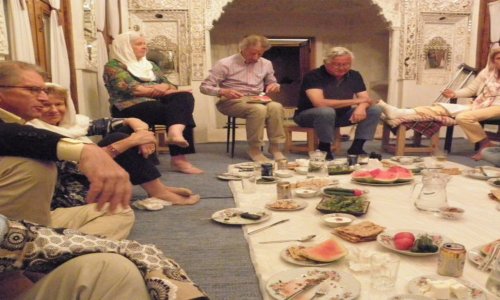
The alley of Ghahro-Ashti in Yazd
The alley of “sulk and reconciliation”
In the old town of Yazd,
there are alleys so narrow that if two passers-by pass each other, they have to stand to the side so that they can pass without jostling each other.
The alley of Ghahro-Ashti in Yazd,
The alley of “sulk and reconciliation”
In the old town of Yazd, there are alleys so narrow that if two passers-by pass each other, they have to stand to the side so that they can pass without jostling each other.
If two people were shunned, their friends would intervene to reconcile them.
On the one hand, his friends take one towards the trap by coming back to the subject and interpolating it on the causes of conflict. Likewise (by the same trick) , just time to cross, one push towards each other to force them to kiss to end the quarrel (of course during the joint walk they try to calm them and justify the action of the other).
It’s not always that easy … the result was sometimes catastrophic, refusing and trying to walk away…
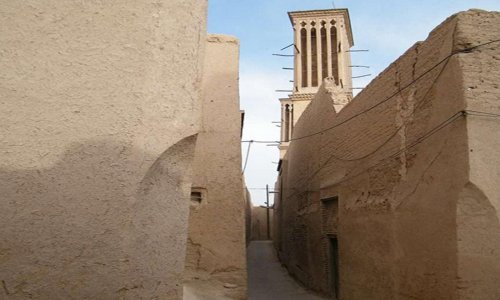
Where to find the ice in summer
Ice dump in Kerman is a conical structure made out of straw and clay which covers a big hemisphere reservoir dug in the ground.
It was a place for preserving the ice.
Where to find the ice in summer?
Ice house is a conical structure made out of straw and clay which covers a big hemisphere reservoir dug in the ground. we find it usually in iran in desert cities as well as Kerman and Yazd. It was a place for preserving the ice. There are some big shallow ponds and high walls near the ice dump to make the ice on winter nights. Every night water was poured into the pond and at night it turned into ice. The ice was taken into the reservoir and a stash of straw was placed between the layers to isolate it. The reason that they made the structure like a cone is because of preventing the heat from entering the ice dump. After filling up the Ice dump, they keep it close until summer and after that, they brought the ice to the city to sell it; in the ceremonies, they use the ice for making the syrup and cold water for the guests, a real refreshing beverage.
Pigeon tower, a source of fertilizer
Pigeon tower was used as a safe house and shelter for the pigeons but this wasn’t the only function.
They were built around the farms to collect their droppings as fertilizer!
Pigeon tower, a source of fertilizer
Pigeon tower was used as a safe house and shelter for the pigeons but this wasn’t the only function. They were built around the farms to collect their droppings as fertilizer! Every 6 month the farmers collected the dropping and used them in their farms or even they sold it. Today we know that these droppings are rich in Nitrogen, a critical element for cucurbits such as melons. No surprise that melons of Isfahan have had a reputation since 1000 years ago.
The structure includes a central cylinder which is surrounded by several smaller cylinders; all are made of brick and plaster. There are thousands of nests on the internal surface of the cylinders.
The only entrance to the tower was a set of holes on the top, just as big as a pigeon, to prevent the birds of prey from entering the tower. There is also a white stripe around the external surface of the tower which is slippery for snakes.
Pigeon towers are only found in Isfahan province and some of these organic fertilizer factories are reconstructed for the people and tourists to visit.
